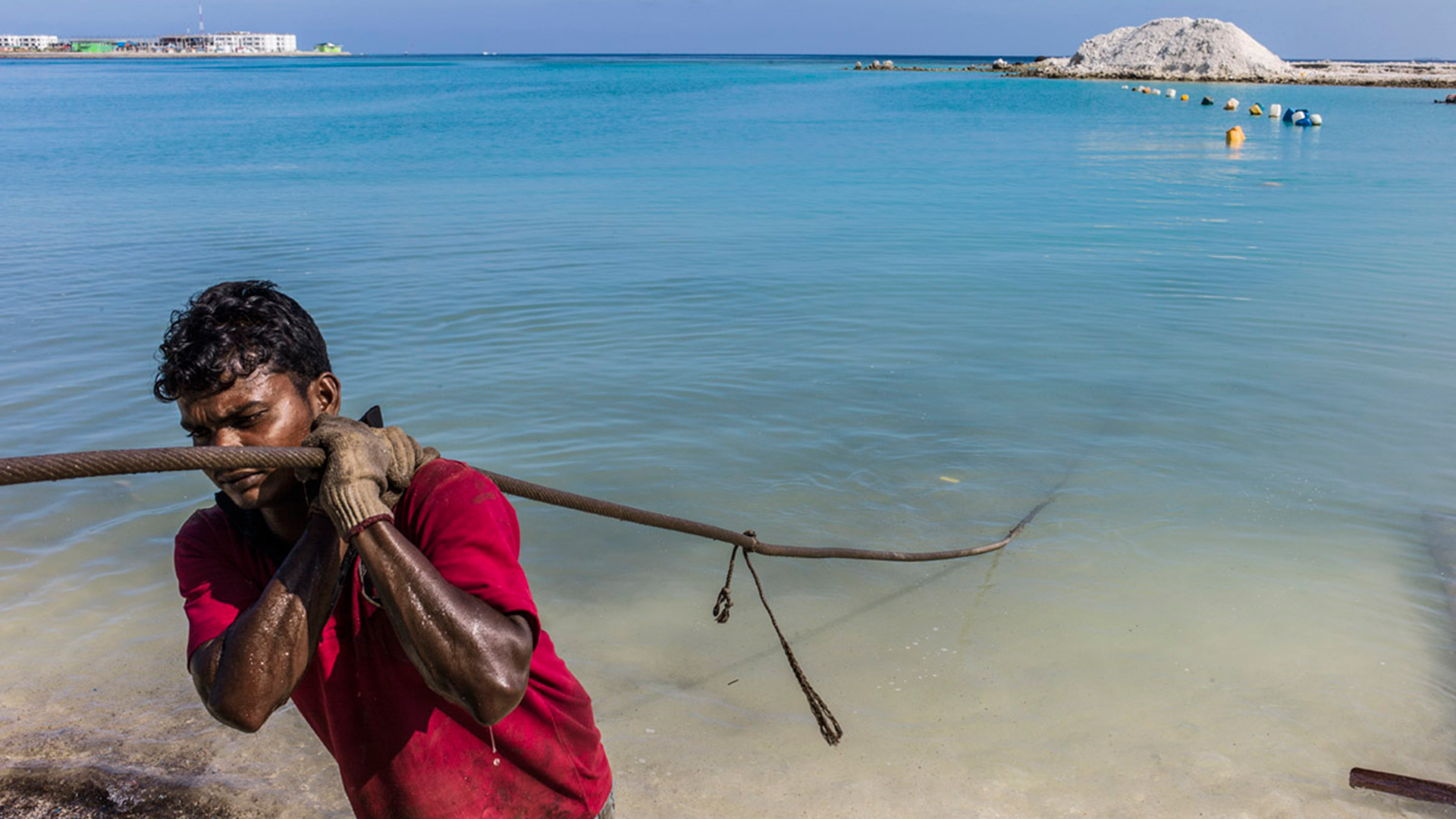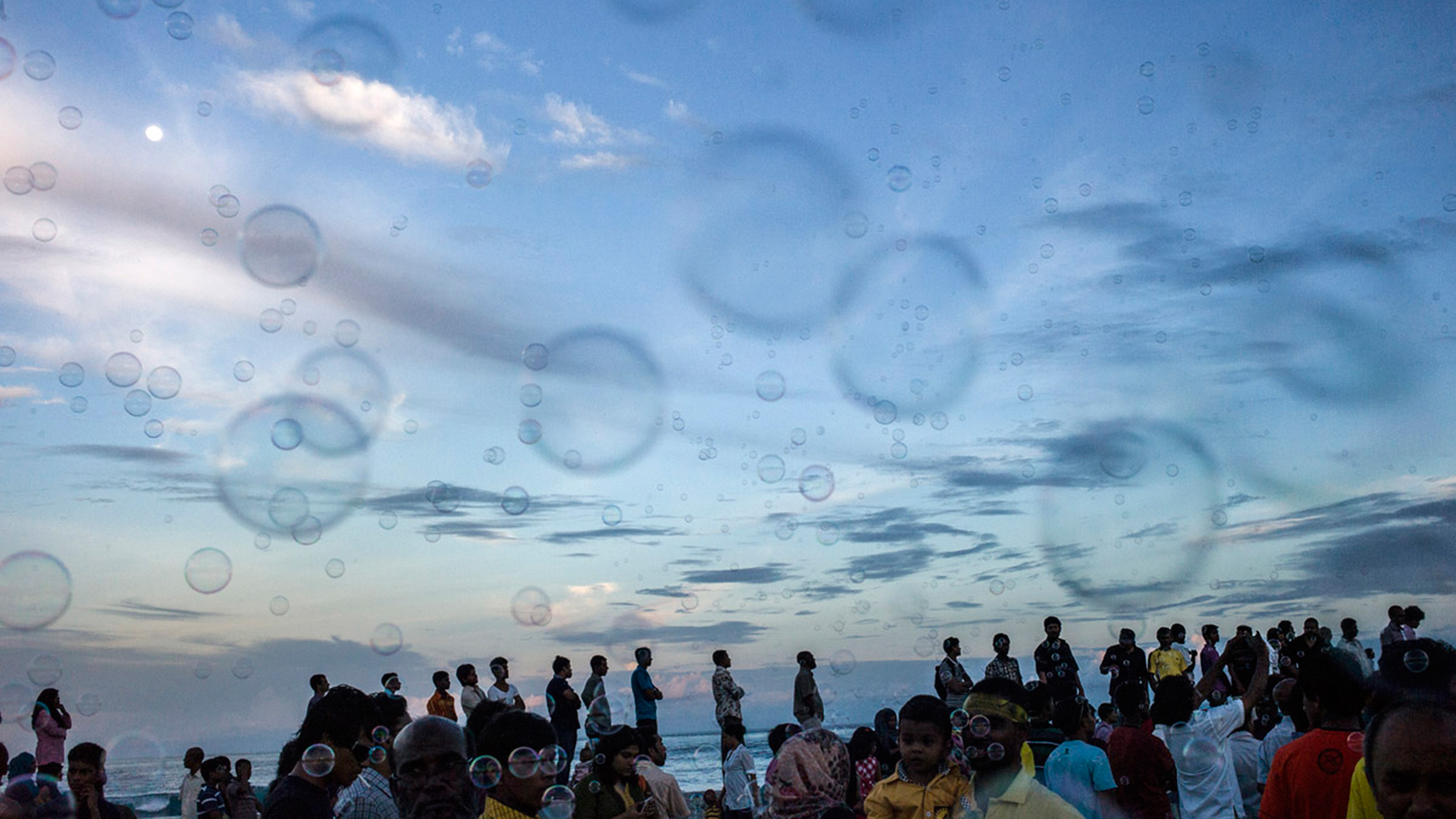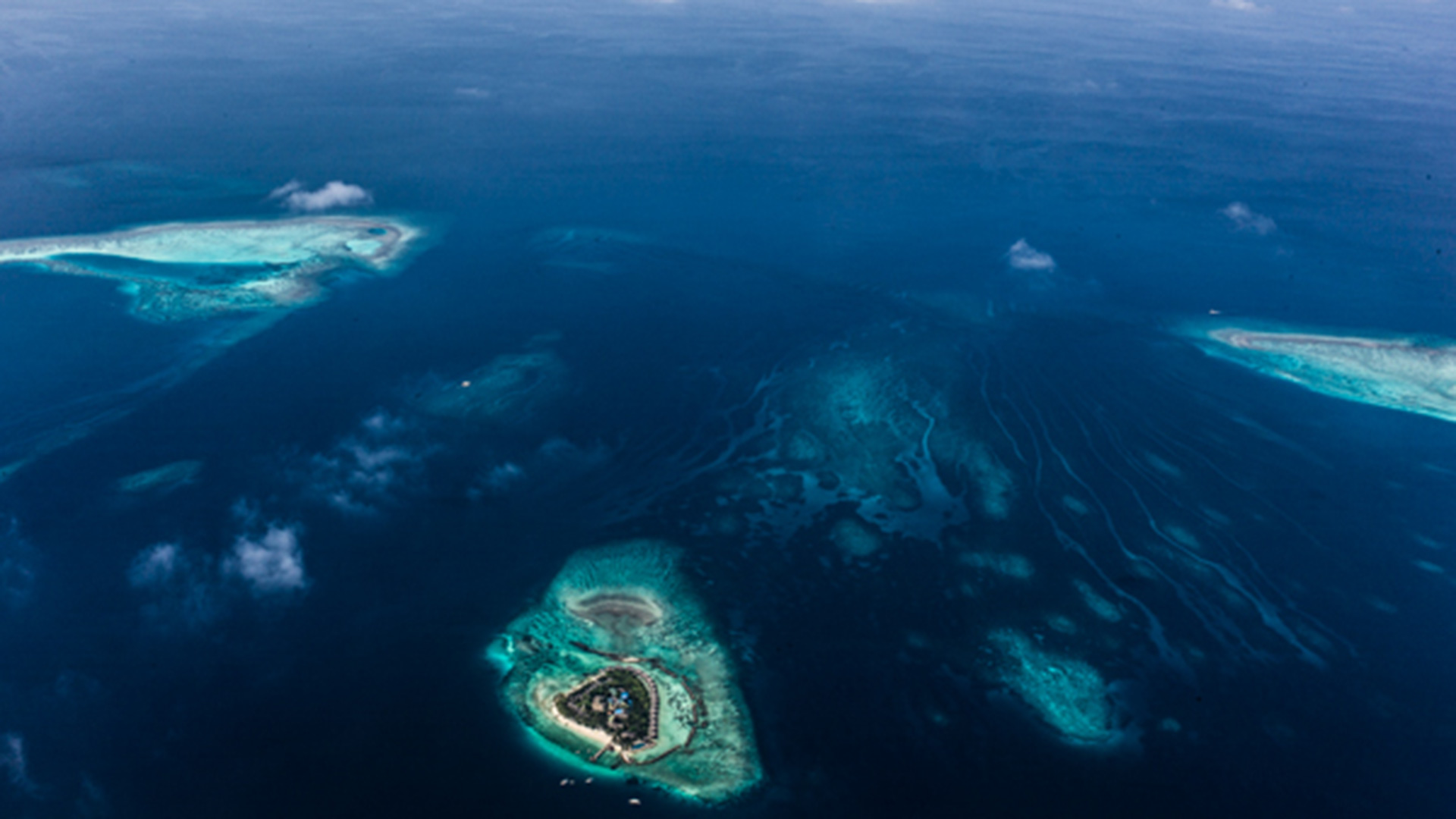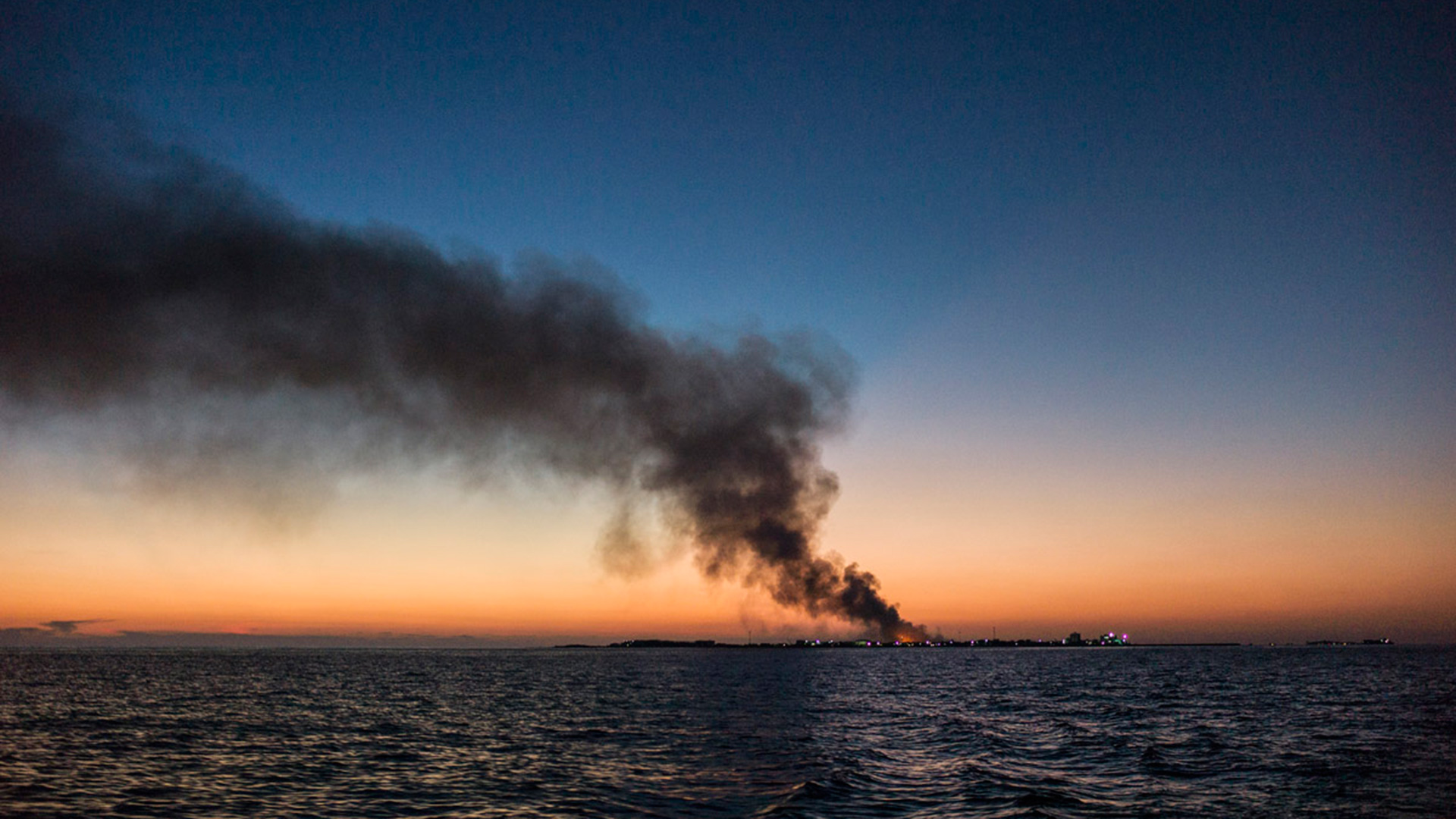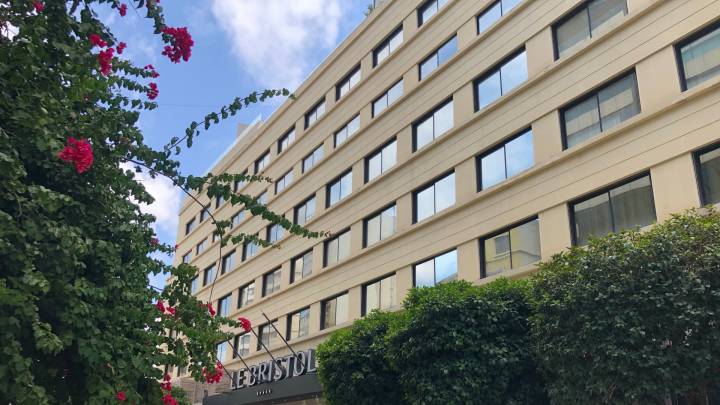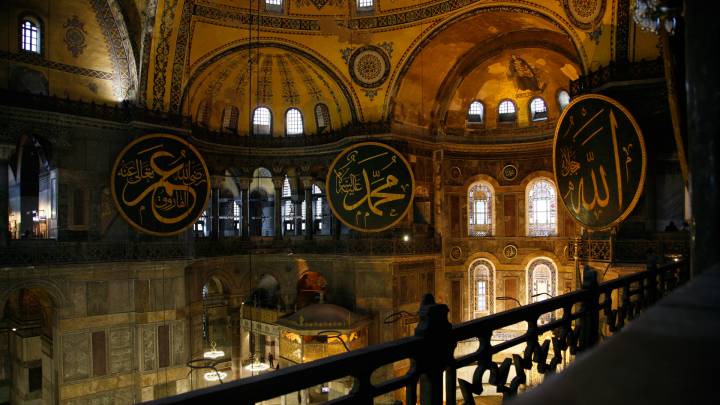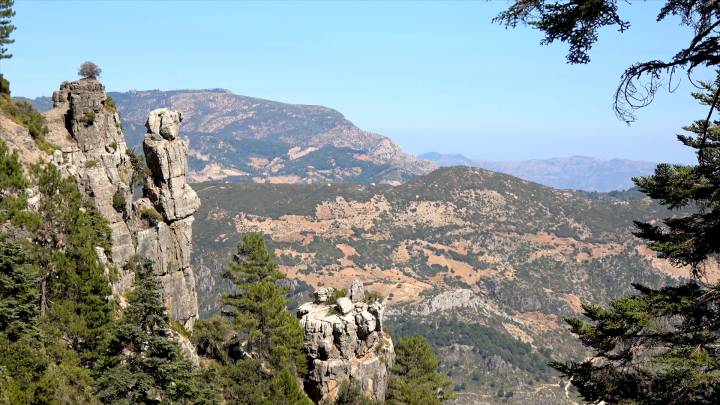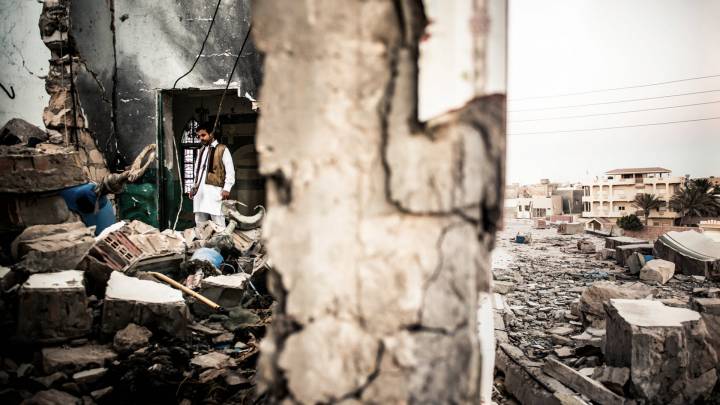Every year, around a million tourists visit the Maldives. As the island nation in the Indian Ocean capitalises on its dreamlike facade, the reality is a country struggling with its history, the dark side of tourism – and with Islam.
Sometimes, 5.8 square kilometres can be enough space for military coups, street electioneering, mountains of scrap and beachside idylls to exist side by side. Malé, the main island of the Maldives, is like a can of sardines – 123,000 people in a confined space, more than 21,000 inhabitants per square kilometre. This makes people inventive. The island looks like a paused game of Tetris, house walls of the most diverse shapes and colours battling it out. This is the pulsating heart of the island nation. One third of the entire population lives on the 1.8km island.
Sleek speedboats and ponderous barges put in and out of the port of Malé. Here, the sea is the motorway. Cities and villages have their own islands. On the Maldives’ 26 atolls, encompassing a total of 1,196 islands, economics and logistics remain a challenge. 220 islands are inhabited and 87 are now accessible to tourists, a number that grows every year. The lucrative business of luxury tourism was introduced by Maumoon Abdul Gayoom, who during his 30-year autocratic rule – from 1978 to 2008 – entrusted uninhabited islands to the management of investors, mostly his own associates. By now the proceeds from tourism make up more than 30 per cent of the Maldives’ gross domestic product.
A single night under the palm trees on the beach with your own hot tub can cost up to several thousand dollars. The cocktail bar beside the pool serves drinks decorated with colourful umbrellas. Staff stand at the restaurant tables, smiling politely, or trim the edges of the on-site lawn tennis court. The world as seen in the brochure. Colourful seaplanes and white yachts transport scantily clad tourists from the airport to their beach bungalows. Most visitors get to see nothing of the everyday life of Maldive Islanders.
Religious hardliners have little actual political swayOnly a few minutes away by boat, alcohol is strictly prohibited. Even in the resorts, the law forbids Maldive Islanders from consuming spirits. The constitution stipulates Sunni Islam as the only permitted religion, a result of the political Islamisation Abdul Gayoom introduced parallel to the tourism-oriented development. The now 79-year-old ex-president studied at Cairo’s Al-Azhar University from 1950 to 1966; bringing his religious education to the politics of his homeland, he turned it into an instrument of domination. Under the pretext of offences to Islam, critical journalists have been silenced and political opponents incarcerated.
Nevertheless, religious hardliners have little actual political sway. While Islamists formed part of the coalition that brought down Abdul Gayoom in 2008, tourism continues to set the tone for all factions. More extensive alcohol or pork bans would be poison to the country’s most important economic sector. Some resorts advertise well-stocked wine cellars; most offer a broad selection of specialty hams. The hotel facilities follow their own set of rules. Some even have their own distinct time zones, so that guests can enjoy the sunset with their dinner.
But the changing balance of world economic power is also bringing a new facet to tourism in the Maldives. More and more visitors from Asia, particularly China, are realising their holiday dreams on the islands. Arabs from Gulf States like to stay in beachside villas during Ramadan, and architectural changes for the sake of Arab guests have already been introduced to the resorts. In some villas, the swimming pools are not built on the sea side, but rather behind the building and out of sight. Here the wives of Sheikhs can enjoy their recreation undisturbed by prying eyes.
Luxury requires labour. Some 20,000 Maldive Islanders are employed in the tourism industry, and there are around 100,000 foreign guest workers – approximately a third of the population. While the resorts are mainly run by Western expats due to the lack of local professional expertise, the service staff for the most part come from Thailand or Sri Lanka. The majority of foreign workers, however, come from Bangladesh. Many of the 80,000 Bangladeshis are in the country illegally and completely unprotected by labour laws. Only a few hours away from Malé by plane, recruiters in Bengali villages describe the Maldives as a worker’s paradise. For a finder’s fee of around $2,000, the recruiters promise a secure job – sun, palm trees and beachside walks included.
Recruiters in Bengali villages describe the Maldives as a worker’s paradise.This is how people like Abulhussein arrive on the atolls. He saw a possible means to support his family and took the risk, leaving behind a wife and three children in Bangladesh. As arranged by his recruiter, he started off at a shipping company, working on a ferry and earning money, some of which he could send back home. After a few months, the ship had to cease operations; Abulhussein lost his job and suddenly realised that he had no work permit.
He ended up on Thilafushi. The artificial island is hard to miss: a few minutes by boat from the capital, it sends up smoke like a giant chimney. Luxury generates waste, and the sea only has a limited capacity to absorb plastic bags and bottles. The boats that pull in are loaded with everything that can’t be easily incinerated on the islands. Abulhussein now spends his days finding and sorting old metal, wearing outsized shoes and wielding a long iron hook. Thousands of blowflies buzz around him. He has an encrusted rash on his neck.
Abulhussein’s family don’t know where he works. For several months he has been waiting in vain to be paid, and the manager of the waste dump keeps putting him off. It’s already been seven months. Still, he cannot seriously consider giving up the work in search of a new job. If he leaves now, he’ll never see the money – and anyway, he doesn’t know where else he could work.
Wealth is concentrated on the hotel islands, while the heavily built-up capital is struggling through political problems.He shares this fate with tens of thousands of foreign workers. The trade in guest workers from neighbouring South Asian countries is a lucrative business in the Maldives and an important foreign exchange earner. This has brought the island nation under observation from the American Foreign Ministry. Sanctions have been threatened in the event that no changes are made.
The government has so far ignored the problem. Not only in tourism, but also in the construction and manufacturing industries, cheap foreign labour power creates huge profits. Among Maldivians, by contrast, unemployment is steadily growing. The macroeconomic figures are paradoxical: listed by the UN as among the poorest countries in the world, from a statistical perspective the Maldives have one of the highest per capita incomes in Asia. Wealth is concentrated on the hotel islands, while the heavily built-up capital is struggling through political problems.
Mohamed Nasheed tried to reduce this division somewhat. Elected president in 2008, he introduced health insurance and maternity leave, developed the infrastructure in the capital city and forced resort owners to pay taxes to the government.
Nasheed won international sympathy with his blazing call to arms against global warming and rising sea levels. Internally, though, he took brutal measures against protestors, giving his opponents the opportunity to make a comeback. Forced to resign on camera in 2012, Nasheed then lost to Abdulla Yameen in the farcical elections held a year later, which stretched out over several weeks. Yameen belongs to the old guard, and had already held the positions of Trade, Tourism and Education Minister under Abdul Gayoom – his half-brother.
Mohamed Ameen Didi, the first president of the Maldives, was lynched by a mob after his dismissal; the second president, Ibrahim Nasir, was exiled in 1978. Gayoom, in 2008, was the first president to be stood down via democratic elections. Come 2014, and 47-year-old Mohamed Nasheed is sitting beside his old political rival Abdul Gayoom to watch qualifying matches for the AFC Asian Cup. Gayoom’s torturers forced Nasheed to swallow splinters of glass; today they pose for selfies together.
In a country where prior to 2014 a former president had never sat next to a serving one, only small steps can be taken. Society in the Maldives seems like a balancing act between piety, surf culture and the search for connection to the modern world. On the beach promenade in Malé, young people gather, cautiously holding hands. The girls wear gaudily coloured headscarves and their trousers are skin-tight. Not far out from the shore, the heads of tanned surfers bob up and down. They’re waiting for the right wave.
This article was first published in German in the 3/2014 issue of zenith.
